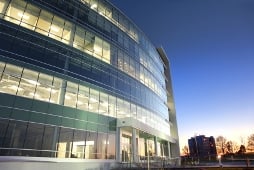 2012 was the best year in the commercial real estate market since 2006. The year closed out the second year of what is going to be a long and drawn-out commercial real estate recovery. On the heels of absorbing (net square footage leased) 1.96M square feet of office, lab/flex and industrial space in 2011, San Diego County absorbed another 2.72M square feet of space across the combined product types in 2012. Combining office, lab/flex, and industrial property types, gives you a high-level marker of where the overall market is trending versus being diverted by just one product type’s performance.
2012 was the best year in the commercial real estate market since 2006. The year closed out the second year of what is going to be a long and drawn-out commercial real estate recovery. On the heels of absorbing (net square footage leased) 1.96M square feet of office, lab/flex and industrial space in 2011, San Diego County absorbed another 2.72M square feet of space across the combined product types in 2012. Combining office, lab/flex, and industrial property types, gives you a high-level marker of where the overall market is trending versus being diverted by just one product type’s performance.
Based on the active client transactions that Hughes Marino is working on for 2013 and 2014 occupancies, we expect this year to be another year of positive net absorption. We are seeing active growth in virtually every submarket, with the exception of Downtown, which continues to be anemic, and Delmar Heights which continues to be relatively overpriced. As a correction in the commercial real estate market continues into 2013, who will the ultimate winners and losers be?
The Winners: Landlords
The gradual tightening market allows landlords the opportunity to place upward pressure on rents, and downward pressure on the amount of free rent they would typically include in a new lease, or lease renewal. Ultimately, this means higher prices for commercial real estate tenants; a natural byproduct of a recovering economy. There is an old saying that “a rising tide lifts all boats.” With corporate revenues and jobs recovering, and the capital markets coming back, ultimately property owners would be a beneficiary as well. Eventually, property owners will begin to win back some ground, after the beating they have taken in the market for the last five to six years.
The Losers: Commuters
For everyday commuters, this improved commercial real estate market is being driven by the increase of jobs in the region. Employers do not lease additional space and expand unless their intention is to put people to work in that space. The 2.72M of net absorption in 2012 means that roughly 9,000 jobs have been created, or will be created, to fill that space. Most of those jobs are being created in the Central County area, fueled by tech and medical device companies in UTC and Sorrento Mesa, adding to the congestion that many San Diegans experience every morning and afternoon on the I-5 and I-805 Freeways. Unfortunately, job growth has outpaced the State of California’s ability to improve our freeway system around the region. It was only a decade ago when commuting the 15 Freeway was intolerable. That has been reversed by a long multi-phased lane widening process. Those same improvements are essential on I-5 Freeway between Carlsbad and Del Mar. Traffic that moves at an orderly pace is always going to be better for the environment versus cars sitting on the freeway spewing pollutants into the adjacent estuaries. It’s also better for the regional economy and quality of life… San Diegans can get to work on time, spend more time with their families, and rest assured that the deliveries of important good and materials aren’t sitting on idling trucks on our freeways.
The Winners: Construction Jobs
New construction will also be a by-product of the gradual tightening market. As vacancy goes down and rental rates go up, developers and their lenders can justify new speculative construction. While this will be a gradual process of building new commercial buildings, look for the start of some major construction projects in 2014 and 2015. Also, the lack of available large blocks of space over 100,000 square feet will require some companies to consider “build to suit” options in the coming years. Additionally, as good options for tenants become in shorter supply over the next two years, older buildings will be remodeled by developers. This new construction and remodeling will help with a job recovery for architects, engineers, and subcontractors across all construction trades. These construction jobs have been decimated over the most recent recession, and the tightening of the commercial real estate market will help to rebuild this sector of the economy.
San Diego will continue to develop strong and diverse industries, adding new high value jobs while maintaining and improving our quality of life. While we negotiate against rising rents almost daily, we also recognize that strengthening commercial real estate marketplace is an inevitable component of our regional growth and success, as is an improved infrastructure to support all of us who live and work in San Diego.
David Marino is senior executive managing partner of Hughes Marino, a global corporate real estate advisory firm that specializes in representing tenants and buyers. Contact David at 1-844-662-6635 or david@hughesmarino.com to learn more.








